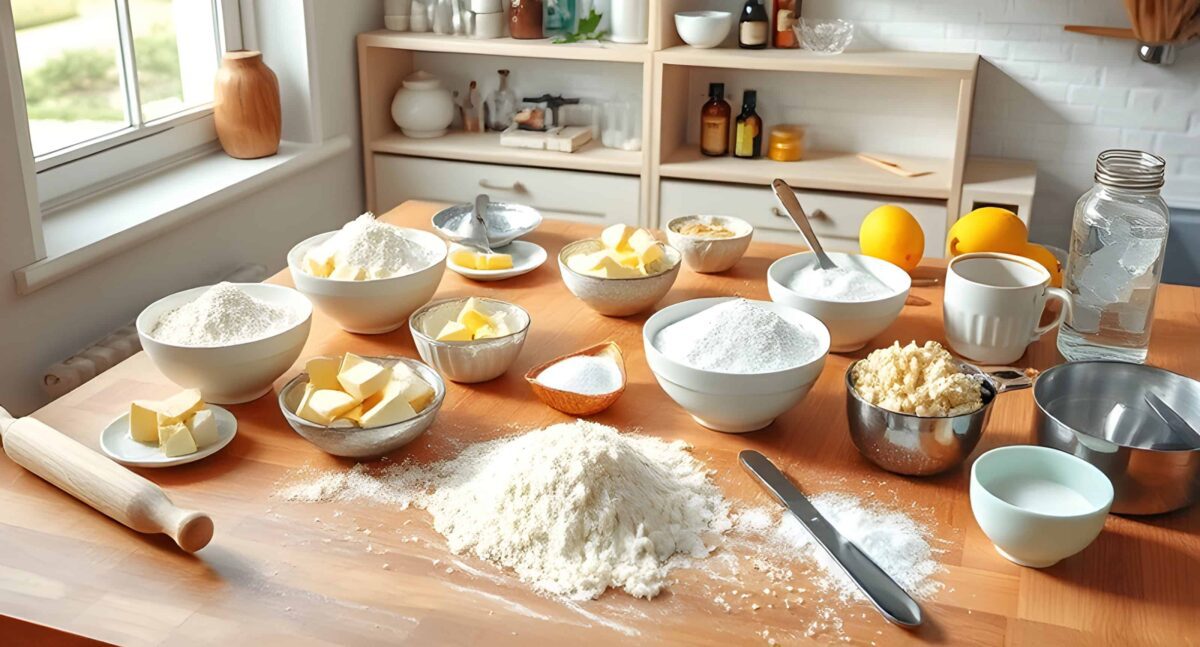Crust dust is what’s left after baking or cooking. Knowing about it can make your baking better and your treats tastier. It’s a big deal in cooking, helping to make food more flavorful and textured.
If you cook at home or professionally, understanding crust dust is key. It’s not just about leftover bits. It’s about using them to make amazing dishes. Exploring crust dust can open up new ways to cook and create.
We’ll dive into the world of crust dust in this article. We’ll cover what it is, its role in cooking, and how to use it. Let’s start and learn about crust dust together.
Crust dust’s ingredients are key to its quality and benefits. It mainly includes flour, water, and yeast. These ingredients help make a crust that’s crispy outside and soft inside.
1. What is Crust Dust?
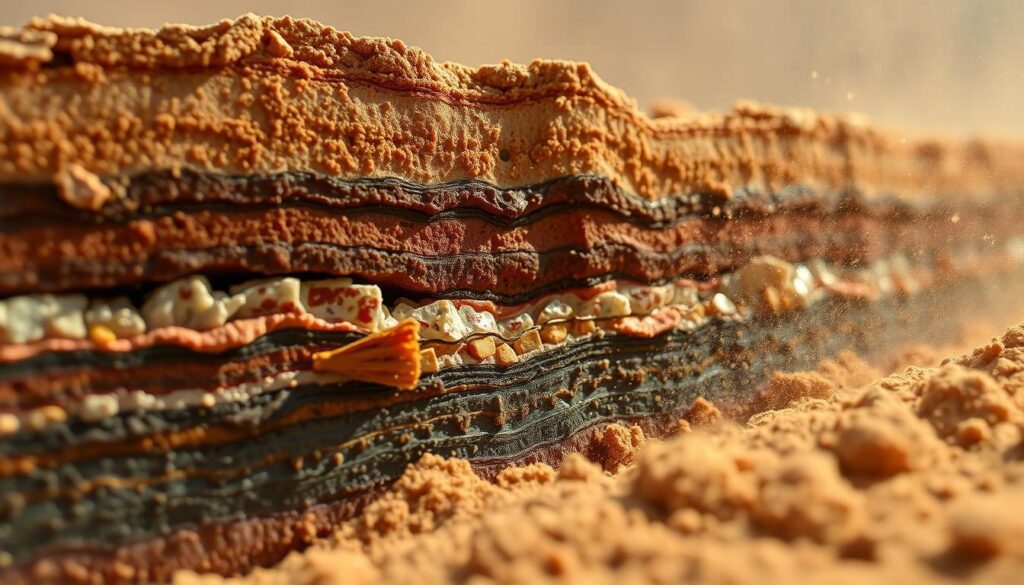
Crust dust is a key part of cooking, with a history that goes back centuries. It’s used in baking bread, making pastries, and desserts. The ingredients can change based on what you want to make, but often include flour, water, yeast, salt, and sugar.
Old civilizations used different ingredients for their bread and pastries. This started the use of crust dust as we know it today. Knowing what crust dust is and what’s in it helps you get better at baking.
Origins and History
The story of crust dust is rich and varied, with many cultures adding to it. It’s been used from ancient Egyptian bread to today’s pastries. Learning about its history helps us appreciate its importance and versatility.
Basic Components
The ingredients in crust dust can change based on the recipe. But, common ones are:
- Flour
- Water
- Yeast
- Salt
- Sugar
Common Applications
Crust dust is used in many ways, from baking to decorating. It’s used for:
- Baking bread
- Creating pastries and desserts
- Adding texture and flavor to dishes
2. The Science Behind Crust Dust Formation
To make crust dust, you need to know how it forms. It’s all about chemical reactions during baking. The Maillard reaction is key, happening between amino acids and sugars.
For a great crust dust recipe, you must control the Maillard reaction. This means watching temperature, pH, and certain compounds. Here are some tips:
- Choose the right flour for its starch and sugar content.
- Adjust temperature and baking time for the Maillard reaction.
- Keep an eye on pH to ensure it’s right for the reaction.
By following these tips and trying different ingredients, you can make your own crust dust. It’s great for both pros and home cooks. Knowing the science behind crust dust can elevate your baking.
3. Essential Ingredients in Crust Dust
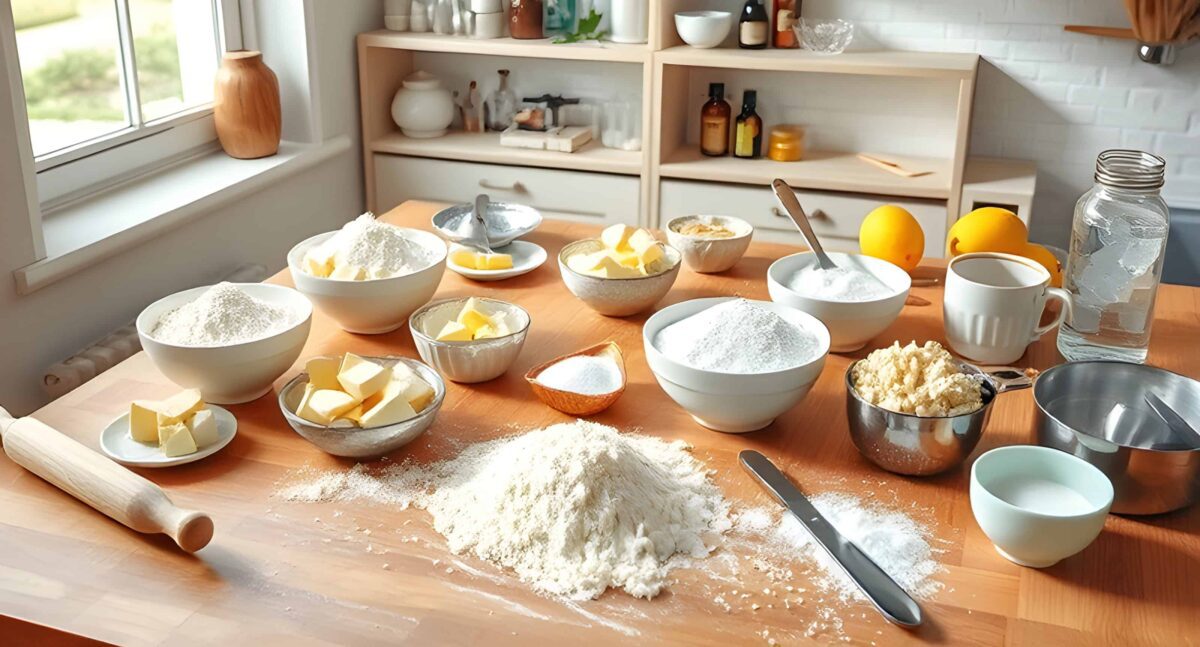
Optional ingredients like salt, sugar, and spices can also improve flavor and texture. The flour type, ingredient ratio, and baking temperature matter a lot. Using top-notch ingredients and a precise recipe can make crust dust both tasty and healthy.
When judging crust dust quality, look at its color, texture, and smell. A great crust dust is golden brown, crispy, and has a savory scent. Knowing the ingredients and their effects helps cooks make perfect crusts for pizzas and breads.
| Ingredient | Function |
|---|---|
| Flour | Provides structure and texture |
| Water | Hydrates the dough and creates steam |
| Yeast | Causes the dough to rise and gives the crust its airy texture |
4. Creating Your Own Crust Dust at Home
You can make your own crust dust at home with simple ingredients. This saves money and ensures a steady supply. To start, mix flour, water, and salt. You can find a basic crust dust recipe online or in cookbooks. Feel free to tweak the ingredients to your liking.
If you’re in a hurry or prefer store-bought, crust dust is available at baking stores or online. Look for high-quality products with good ingredients for the best results.
Here are some tips for making crust dust at home:
- Choose fresh, high-quality flour.
- Adjust the ingredient ratio for the perfect crust.
- Try different seasonings and herbs for unique flavors.
| Ingredient | Quantity | Purpose |
|---|---|---|
| Flour | 2 cups | Base ingredient for crust dust |
| Water | 1 cup | Hydrates the flour and helps create texture |
| Salt | 1 tsp | Enhances flavor and helps control yeast growth |
5. Popular Uses in Modern Cooking
CrCrust dust is a versatile ingredient with numerous applications in modern cooking. It enhances texture and flavor, making it a favorite in both home and professional kitchens. From artisan bread to pastries and desserts, crust dust plays a pivotal role in elevating recipes. For tips on perfecting pies, explore Achieve Pie Perfection with These 5 Tips to take your skills to the next level.
Popular Uses of Crust Dust
Here are some of the most common ways crust dust is used:
- Baking bread and pastries: Adds a delicate, flaky texture.
- Creating sauces and marinades: Enhances flavor complexity.
- Adding texture to soups and salads: Provides a subtle crunch and depth.
In professional kitchens, crust dust is often the secret behind signature dishes. It not only enhances the dining experience but also demonstrates its versatility. For more inspiration, check out our guide on Types of Dough for Pies and Tarts to expand your culinary repertoire.
Elevating Your Cooking with Crust Dust
Understanding the full potential of crust dust can transform the way you cook. Whether you’re a home cook or a seasoned chef, this ingredient opens up endless possibilities. By mastering its uses, you can elevate your dishes, creating memorable meals that impress every time.
| Crust Dust Use | Description |
|---|---|
| Baking | Adding texture and flavor to bread and pastries |
| Culinary Techniques | Creating delicious sauces and marinades |
| Professional Kitchen Uses | Enhancing the overall dining experience |
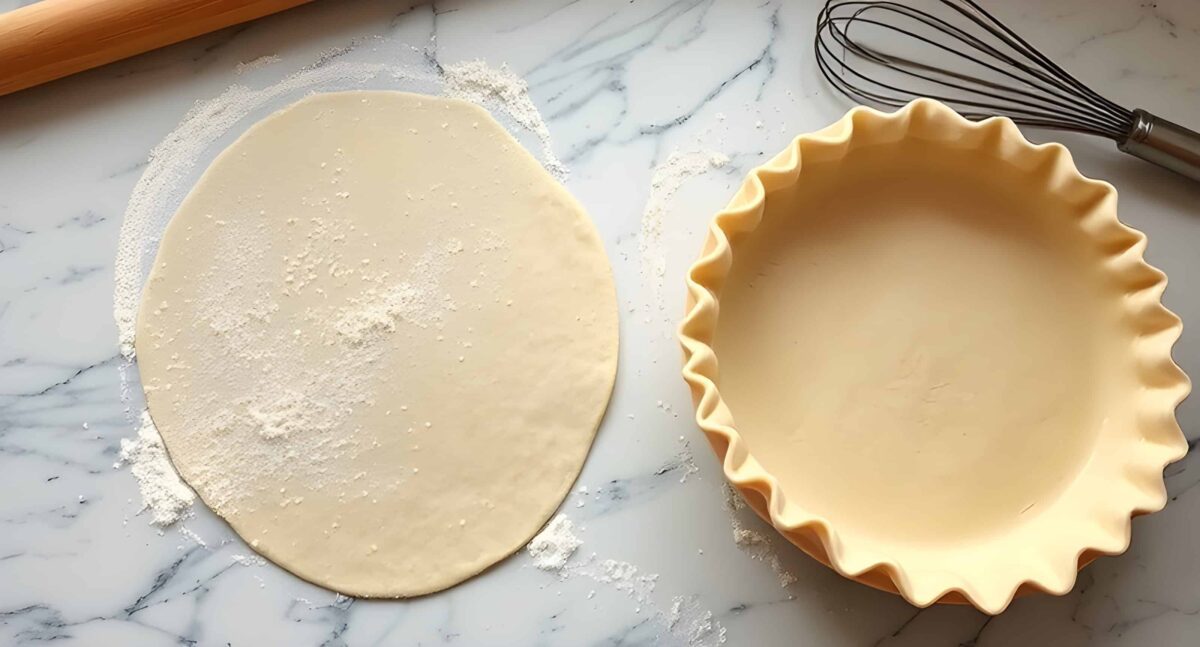
6. Health and Nutritional Benefits
Crust dust offers many health benefits. It can improve your digestive health. The fiber and nutrients in it help with digestion. Its antioxidants also reduce inflammation and boost overall health.
Some of the key benefits of crust dust include:
- Improving digestion and reducing symptoms of irritable bowel syndrome
- Reducing inflammation and improving overall health
- Providing essential nutrients and fiber
Crust dust is a nutritious and delicious addition to any meal, and its health benefits make it a great choice for those looking to improve their overall well-being.
In conclusion, crust dust is a valuable ingredient. It offers many health and nutritional benefits. It’s a great choice for a healthy diet.
| Benefit | Description |
|---|---|
| Improves digestion | Crust dust can help reduce symptoms of irritable bowel syndrome and improve overall digestive health |
| Reduces inflammation | Crust dust has antioxidant properties that can help reduce inflammation and improve overall health |
| Provides essential nutrients | Crust dust is a good source of fiber and other essential nutrients |
7. Best Practices for Storage and Preservation
Keeping crust dust fresh is key. When you buy crust dust, think about where you’ll store it. It should be in a cool, dry spot, away from sunlight and moisture.
To keep your crust dust fresh, follow these tips:
- Use an airtight container to keep moisture and air out.
- Keep it away from sunlight to prevent ingredient breakdown.
- Regularly check for mold or an off smell.
By storing your crust dust right, you can enjoy it longer. Remember, proper storage is crucial whether you’re buying or storing crust dust. It ensures you get the most from your purchase.
By following these tips and using a simple crust dust recipe, you can make your own crust dust. This can elevate your baking, whether you’re a pro or a home cook. Making your own crust dust ensures consistent results and adds a personal touch to your baked goods.
With the right storage, your crust dust stays fresh and useful. It becomes a valuable tool in your kitchen.
| Storage Conditions | Shelf Life | Signs of Spoilage |
|---|---|---|
| Cool, dry place | Several months | Mold, off smell |
8. Professional Chefs’ Tips for Using Crust Dust
Professional chefs have a lot to say about crust dust application in cooking. They find it great for boosting flavors and making unique dishes. In the world of crust dust in cooking, the right methods and ingredients are key.
Some chefs love using crust dust for its texture and taste. A little crust dust can make roasted veggies or meats crunchy. Others mix it with sauces or soups for a creamy texture.
- Try different crust dusts to see what works best for your recipes.
- Feel free to mix crust dust with other ingredients for a special flavor.
- Use crust dust carefully, as it can overpower other tastes in your dish.
By following these tips, you can elevate your cooking with crust dust in cooking. It’s a skill that can be learned with practice and patience. Whether you’re experienced or new to cooking, mastering crust dust application can impress everyone.
9. Common Mistakes to Avoid
Working with crust dust requires knowing common mistakes. These errors can ruin your dishes. To avoid these problems, let’s look at some common mistakes.
One big mistake is using too much or too little crust dust. This affects the dish’s texture and taste. Finding the right amount is key. Also, storing crust dust wrong can shorten its life and change its taste. Moisture or sunlight can make it stale or taste bad.
Common Errors to Watch Out For
- Using too much crust dust, leading to an overpowering flavor
- Insufficient storage, causing crust dust to become stale or spoiled
- Incorrect application, resulting in an uneven texture or flavor
To keep your crust dust fresh and effective, be careful. Store it in a cool, dry place. Use it just enough to get the best taste. With practice, you’ll get better at using crust dust and make tasty dishes.
Avoiding these mistakes lets you use crust dust to its fullest. This can take your cooking to new heights.
| Common Mistake | Effect on Crust Dust |
|---|---|
| Excessive moisture | Stale or spoiled crust dust |
| Incorrect storage | Reduced shelf life and effectiveness |
| Insufficient application | Uneven texture or flavor |
10. Comparing Commercial vs. Homemade Crust Dust
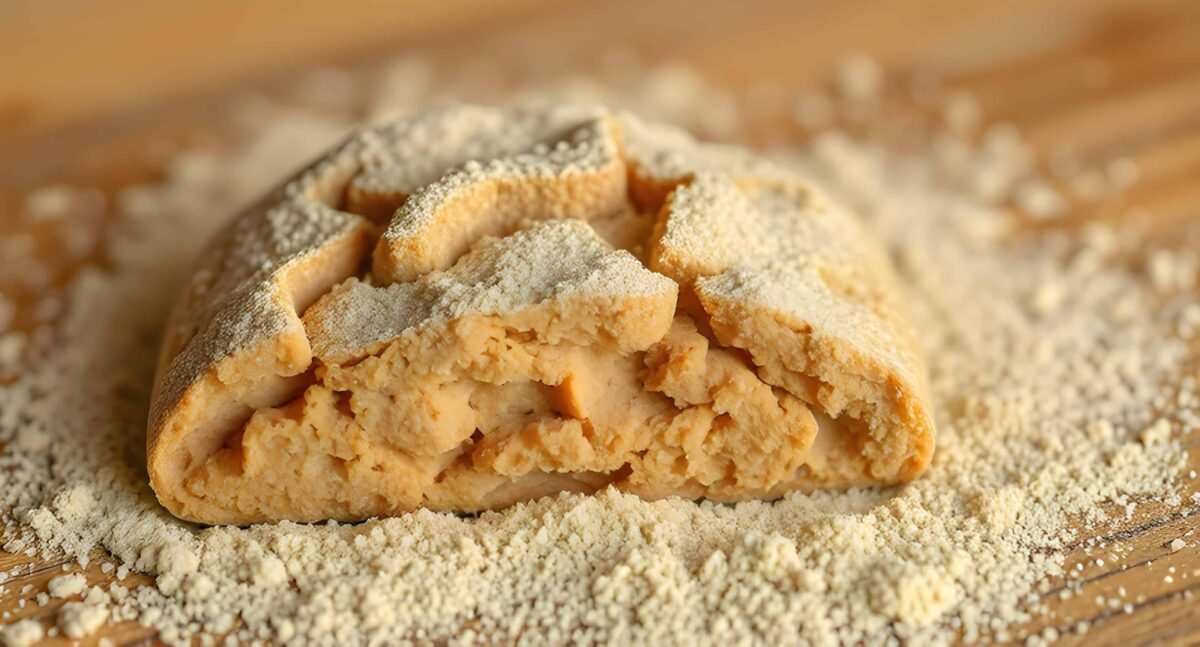
When it comes to crust dust, you have two options: commercial or homemade. If you’re wondering where to buy crust dust, you can find it at most baking supply stores or online. Making your own homemade crust dust is a cost-effective and customizable choice.
Here are some advantages and disadvantages of each option:
- Commercial crust dust: convenient, widely available, but may contain additives or preservatives
- Homemade crust dust: cost-effective, customizable, but requires more time and effort to make
The choice between commercial and homemade crust dust depends on your needs and preferences. If you prefer convenience and don’t mind additives, commercial crust dust might be best. But if you want a natural and customizable option, making your own homemade crust dust is a great choice.
By choosing the right type of crust dust, you can elevate your baking. You’ll create delicious, high-quality crusts that impress everyone.
11. Where to Source Quality Crust Dust
Finding the right crust dust can be tough with so many choices. Whether you bake professionally or at home, you want the best. Let’s look at where to buy crust dust and what makes a good supplier.
For crust dust, you can check baking supply stores and specialty food shops. These places offer various products from different makers. You can compare and choose what’s best for you. Online, Amazon and baking websites also have a wide selection.
Retail Options
- Baking supply stores
- Specialty food shops
Online Suppliers
- Amazon
- Baking supply websites
When looking for quality crust dust, think about what you need. Ingredients, texture, and flavor are key. By exploring different places, you can find the perfect crust dust for your recipes.
What to Look For
| Factor | Considerations |
|---|---|
| Ingredients | Check the ingredient list to ensure it meets your dietary needs and preferences |
| Texture | Choose a crust dust with a texture that suits your baking and cooking needs |
| Flavor | Select a crust dust with a flavor that complements your recipes |
FAQ
What are the health and nutritional benefits of crust dust?
Crust dust is good for you. It can help with digestion because of its fiber. It might also have anti-inflammatory properties. Adding crust dust to your diet can improve your health.
How should I store and preserve crust dust?
To keep crust dust fresh, store it in a cool, dry place. Keep it away from sunlight and moisture. Check it regularly for signs of spoilage.
What are some common mistakes to avoid when using crust dust?
Avoid using too much or too little crust dust. Also, don’t store it in moist or sunny places. Knowing these mistakes can help you use crust dust well.
What are the differences between commercial and homemade crust dust?
Homemade crust dust is better because you can control the ingredients. It’s also cheaper and customizable. Making your own ensures it meets your needs.
Where can I source quality crust dust?
You can find good crust dust in stores or online. Look for products that fit your needs, like ingredients and flavor. Quality matters.
Conclusion
As we wrap up our look at crust dust, it’s clear it’s not just any ingredient. It has a rich history and many uses in cooking. This makes it a key item in every kitchen.
Knowing how it’s made and what makes it versatile opens up new flavors. Home cooks and chefs can explore many tasty options.
Whether you make your own crust dust or buy it, it can change your cooking. It can make your baked goods better and add a special touch to savory dishes. It’s a must-have for any kitchen.
With the tips from this article, you can try new things with crust dust. You’ll learn how to store it and avoid mistakes. Now, you’re ready to use it to its fullest.
So, let your cooking imagination run wild. With crust dust by your side, you can create amazing dishes.

